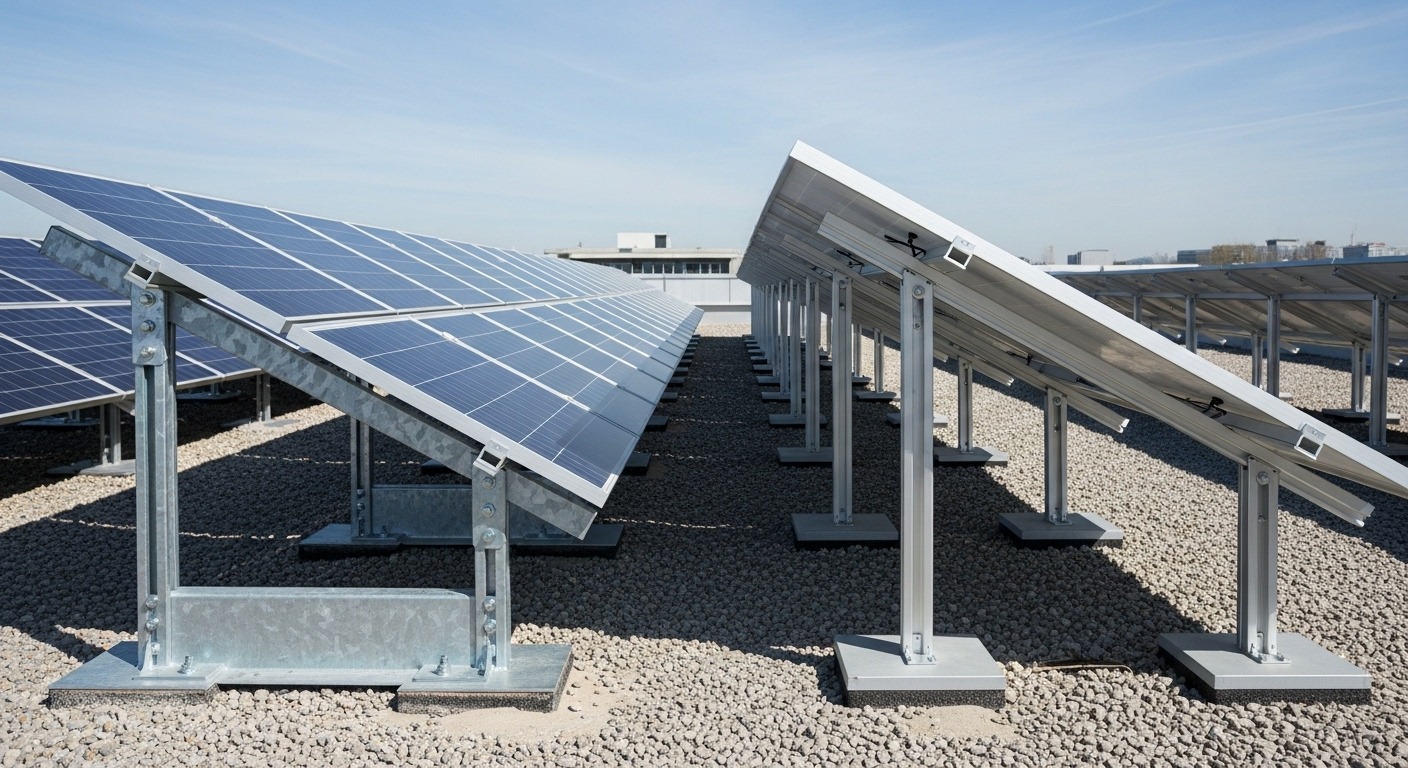
When it comes to solar power systems, the mounting structure plays a critical role in ensuring performance, safety, and durability. The structure keeps solar panels firmly fixed at the correct angle, withstanding weather conditions like wind, rain, and temperature changes.
In Pakistan and globally, two main types of mounting structures are commonly used:
Both structures are available in L2, L3, and P1 designs, but they differ in terms of strength, durability, reliability, and cost-effectiveness. Let’s explore their differences in detail.

Article By Hamza Nawaz
I’m solar energy professional at Ocentra Engineering Services and founder of Tech Burst Solutions. With expertise in project management, PV system designing, and electrical technology.
What is a GI Structure?
GI stands for Galvanized Iron, which is iron or steel coated with a protective layer of zinc. This coating prevents rusting and corrosion.
Advantages of GI Structure:
Disadvantages of GI Structure:
What is an Aluminium Structure?
Aluminium structures are made from high-grade aluminium alloys, known for being lightweight, corrosion-resistant, and durable.
Advantages of Aluminium Structure:
Disadvantages of Aluminium Structure:
GI vs Aluminium – Side-by-Side Comparison
| Feature | GI Structure | Aluminium Structure |
| Strength | High tensile strength, rigid | Medium tensile strength |
| Weight | Heavy | Lightweight |
| Corrosion Resistance | Good (but coating can wear off) | Excellent, does not rust |
| Durability | 15–20 years (with good maintenance) | 20–25+ years |
| Maintenance | Requires occasional checks for rust | Very low maintenance |
| Installation | Difficult (due to weight) | Easy (lightweight, faster installation) |
| Cost | More affordable | More expensive |
| Best Use Cases | Ground-mounted, heavy-load rooftops | Premium rooftops, coastal areas |
| Design Types | L2, L3, P1 available | L2, L3, P1 available |
Reliability and Durability
Which One is Better?
The answer depends on project requirements:
In short:
Conclusion
Both GI (14-gauge) and Aluminium (2.5mm) structures in L2, L3, and P1 designs have their place in solar projects.
When choosing between the two, consider location, budget, and system size. A well-selected structure ensures that your solar panels stay protected, efficient, and reliable for decades.
